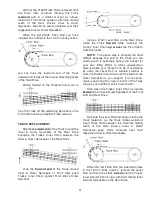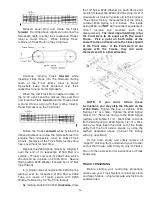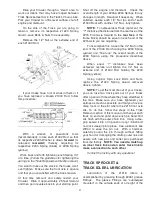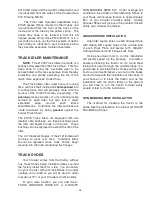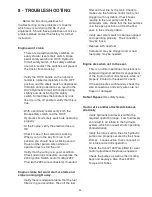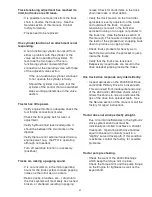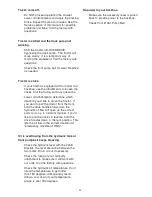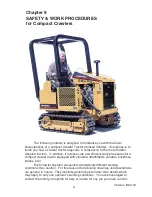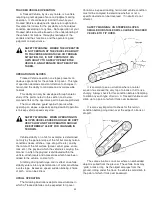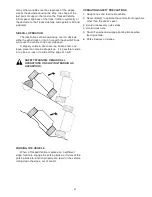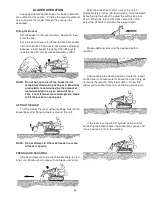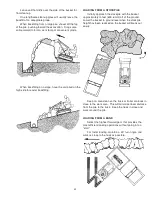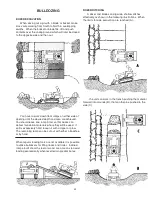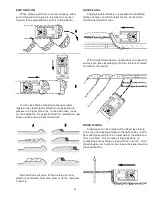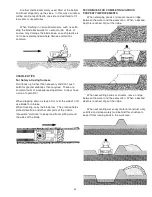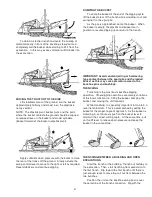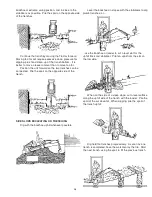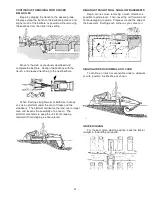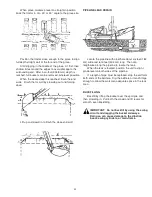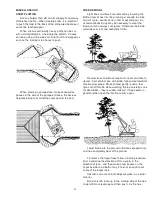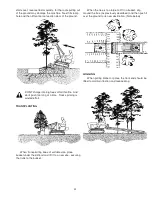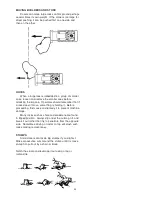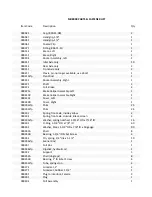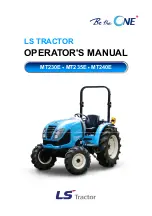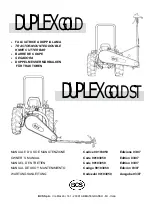
OPERATING WITH FLOAT CONTROL
During hard surface operation, place the control lever
in “float” (held by the detent), and keep the bucket level.
This will permit the bucket to “Float” on the contour of the
working surface. If hydraulic down pressure is exerted,
the bucket will wear faster than normal.
The ‘float” position will prevent the mixing of surface
material with stockpile material. It will also reduce the
chance of surface gouging when removing snow or other
material.
CARRYING THE LOAD
Position the bucket in the full roll back position and
the lift arms as low as possible for maximum stability and
visibility whether the bucket is loaded or empty.
CAUTION: When operating on a hill or slope, keep
the bucket as low as possible. This keeps the
bucket center of gravity (C/G) as low as possible,
giving maximum stability.
When transporting the load, keep the bucket as low
as possible to resist tipping, in case a track drops in a rut.
DUMPING THE BUCKET
Lift the bucket high enough to clear the side of the
vehicle. Move unit in as close to the side of the vehicle
as possible, then dump the bucket.
After the bucket is dumped, back away from the
vehicle while lowering and leveling the bucket.
BACKFILLING
Efficient backfilling occurs by pushing maximum
amounts of soil without losing speed or “stalling.” If a
“stall” occurs, downshift or reduce the depth. If the unit is
not working at capacity in the gear selected, increase the
depth of the cut.
Approach the pile with a level bucket. When
adjusting the depth of cut to a load that can be handled
without going into a “stall,” actuate the control lever for lift
and bucket action simultaneously, or separately as
required, to maintain a level bucket.
Leave the soil in the bucket, as dumping on each
pass is time consuming. Lift and level the bucket for the
next pass while backing from the excavation.
Operate at right angles to the ditch.
39

